Bouncing back to the Gym after an Injury:
Returning to fitness after an injury can be a difficult and frustrating process. It’s important to approach the process with care, patience and the right support, in order to successfully achieve your fitness goals.
What is the best way to start working out again after having an injury?
The best way to start working out again after an injury is to gradually progress back into physical activity. It’s important to listen to your body and avoid pushing yourself too hard, too soon. Start with light and low-impact exercises, such as walking or gentle stretching, and gradually increase the intensity and duration as you feel comfortable. It’s also important to work with a physical therapist or healthcare professional to develop a safe and effective rehabilitation plan that takes into account your specific injury and goals.
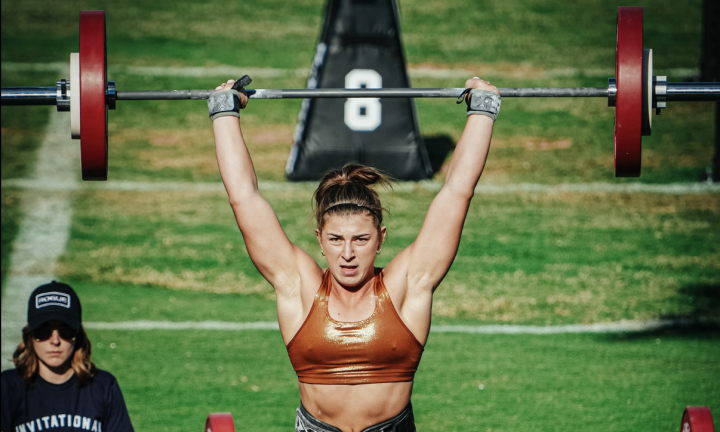
What is the science behind the importance of working out after getting injured?
Research has shown that staying active after an injury can help to reduce pain and improve physical function. Regular physical activity can also help to reduce the risk of developing chronic conditions, such as arthritis, that are associated with a sedentary lifestyle. Additionally, exercise can have a positive impact on mental health, by reducing stress and improving mood.
What is the best way to mentally prepare for working out again?
that take into account the time and effort required to recover from an injury. Celebrate your progress and focus on the benefits you’re gaining, rather than the setbacks or setbacks you may encounter along the way.
When should people start working out again after getting an injury?
The timing of starting to work out again after an injury depends on the type and severity of the injury. It’s important to follow the advice of your healthcare professional, and to only begin physical activity once you have received clearance to do so. It’s also important to progress slowly and to listen to your body, avoiding activities that cause pain or discomfort.
Inspirational Quotes to help you approach starting to work out again:
- “Success is not final, failure is not fatal: it is the courage to continue that counts.” - Winston Churchill
- “Fall seven times, stand up eight.” - Japanese Proverb
- “The greatest glory in living lies not in never falling, but in rising every time we fall.” - Nelson Mandela
- “Don’t watch the clock; do what it does. Keep going.” - Sam Levenson
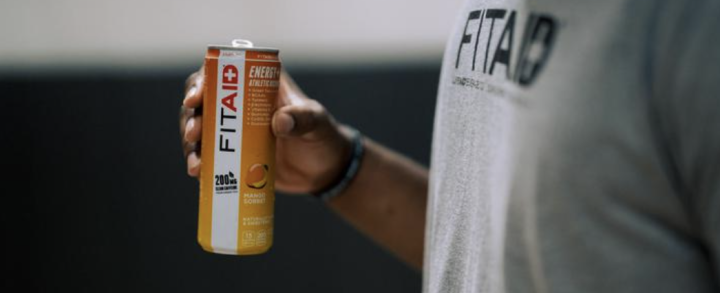
Drink Smart
FITAID drinks can be a great choice for recovery and post-workout routines, as they contain no artificial sweeteners, no sucralose or aspartame or Ace-K, and have clean caffeine from green tea extract. The vitamins in FITAID, such as turmeric, glucosamine, vitamin B12 and BCAAs, help to aid muscle recovery and improve overall health. Scientific research supports the use of these ingredients for recovery and improved athletic performance.
In addition to FITAID- here are some tips and tricks and some articles that provide information on physical therapy tips and tricks to stay healthy and prevent injury during workouts:
- Warm-up properly: Before starting your workout, warm up for at least 5-10 minutes with light cardio exercises such as jogging, jumping jacks, or jumping rope.
- Strengthen core muscles: Strong core muscles help prevent injury and improve overall performance. Incorporate exercises such as planks, bridges, and bird-dogs into your workout routine.
- Stretch regularly: Regular stretching can help improve flexibility and prevent injury. Hold each stretch for 20-30 seconds and make sure to stretch both before and after your workout.
- Use proper form: Using proper form during exercises can prevent injury and help you get the most out of your workout. If you're not sure how to do an exercise correctly, ask a personal trainer or physical therapist for help.
- Focus on balance and stability: Incorporate balance and stability exercises into your workout routine, such as single-leg squats, lunges, and balance board exercises.
- Listen to your body: If you feel pain or discomfort during your workout, stop and take a break. Don't push through pain, as this can lead to injury.
- Gradually increase intensity and volume: Gradually increasing the intensity and volume of your workout can help prevent injury. Start with lighter weights and shorter workouts and gradually increase as your body adjusts.
- Cross-train: Cross-training, or incorporating a variety of exercises into your routine, can help prevent injury by reducing stress on any one area of your body.
- Get enough rest: Rest and recovery are an important part of preventing injury. Make sure to get enough sleep and take breaks when your body needs them.
- Work with a physical therapist: A physical therapist can help you create a safe and effective workout plan, teach you proper form and technique, and help you recover from injury.Articles:These articles provide information on proper warm-up techniques, ways to prevent overuse injuries, and injury-prevention exercises to add to your workout routine. Additionally, they also touch upon the importance of rest, recovery and listening to your body.
-
- "5 Physical Therapy Tips for Staying Injury-Free While Working Out" by Chelsea Bowlin, published on Healthline.com.
- "Physical Therapy Tips to Prevent Workout Injuries" by Amanda Weiss, published on Verywellfit.com
- "7 Physical Therapy Techniques to Prevent Workout Injuries" by Casey Bond, published on Shape.com
- "The Physical Therapist’s Guide to Staying Injury-Free During Workouts" by Jordan Metzl, MD, published on Runner's World
- "Expert Physical Therapy Tips for Staying Injury-Free" by Nick English, published on Breakingmuscle.com
Pro-Recovery Injuries
Here is a list of some professional athletes who have faced career-ending injuries who were able to bounce back to accomplish major
- Kobe Bryant (Basketball) - Suffered a torn Achilles in 2013 but returned to lead the Lakers to two more championships.
- Tom Brady (Football) - Suffered a torn ACL in 2008 but went on to become one of the greatest quarterbacks in NFL history.
- Serena Williams (Tennis) - Suffered a life-threatening blood clot in 2011 but returned to win multiple Grand Slam titles.
- Adrian Peterson (Football) - Suffered a torn ACL and MCL in 2011 but returned to lead the NFL in rushing yards the following season.
- Alex Rodriguez (Baseball) - Suffered a hip injury in 2009 but returned to become one of the greatest power hitters in MLB history.
- Peyton Manning (Football) - Suffered multiple neck surgeries in 2011 but returned to lead the Denver Broncos to a Super Bowl victory in 2015.
- Lindsey Vonn (Skiing) - Suffered multiple knee injuries throughout her career but went on to become one of the greatest ski racers of all time.
- Michael Jordan (Basketball) - Suffered a broken foot in 1986 but returned to lead the Chicago Bulls to six championships.
- Rafael Nadal (Tennis) - Suffered multiple knee injuries throughout his career but has continued to win Grand Slam titles and dominate the tennis world.
- Maria Sharapova (Tennis) - Suffered a shoulder injury in 2008 but returned to win multiple Grand Slam titles and become one of the greatest tennis players of all time.
In conclusion, returning to fitness after an injury takes time, patience and the right support. Focus on your goals, stay positive and celebrate your progress, and you can successfully achieve your fitness goals!!!
It’s important to approach the process of returning to fitness with a positive and patient mindset. Surround yourself with supportive friends and family, and set realistic goals
What is Grounding?
Grounding, also known as earthing, is a wellness practice that involves connecting with the earth by barefoot exposure to the ground, or through other means such as using special mats or sheets. While some people may view it as "hippy stuff," the practice has a growing body of scientific evidence supporting its potential health benefits. These benefits include reducing inflammation, improving sleep, reducing stress, and promoting overall well-being. However, it's important to note that more research is needed to fully understand the effects of grounding and more conclusive evidence is required to support its health benefits.
The science behind grounding involves the transfer of electrons from the Earth to the body, which are believed to have a range of health benefits.
The idea behind grounding is that the earth has a negative electric charge, and our bodies have a positive charge due to the buildup of electrons from sources such as electronic devices, stress, and unhealthy diets. By connecting with the earth, grounding allows the transfer of electrons from the earth to our bodies, potentially neutralizing this positive charge and reducing inflammation and oxidative stress.
What can grounding do for you?
Research on grounding has shown promising results in areas such as possibility of reducing inflammation, improving sleep, reducing stress, and promoting overall well-being. For example, one study found that participants who grounded for just one hour had a significant decrease in levels of the stress hormone cortisol. Another study showed that grounding for just 30 minutes improved sleep and reduced pain and fatigue in people with chronic pain.
Is grounding good for post workout recovery?
Some studies have shown that grounding can help reduce oxidative stress and improve circulation, which can be especially beneficial for post-workout recovery.
To incorporate grounding into your post-workout routine, try going for a walk barefoot on natural surfaces such as grass, sand, or soil, or consider using an earthing mat or sheet to sleep on. To optimize the benefits of grounding, it is recommended to spend at least 30 minutes in direct contact with the Earth each day.
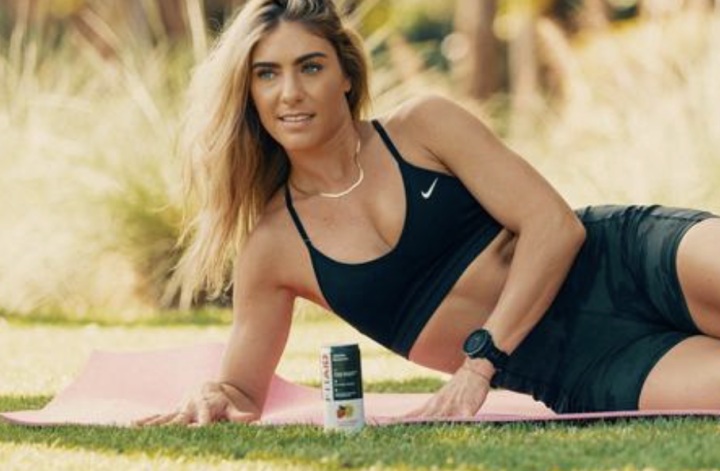
Science or Fad?
While there is some scientific evidence to support the health benefits of grounding, it is still a relatively new area of research and more studies are needed to fully understand its effects. Despite this, many people have reported positive experiences with grounding, including improved sleep, reduced pain and stress, and better overall health and wellbeing.
Famous athletes who are known to incorporate grounding into their routines include professional surfer Laird Hamilton and Ironman champion Chris McCormack.
FYI! Grounding is not related to the electrical wiring or grounding in a building.
Here are some scientific articles and studies that discuss the concept of grounding and its potential health benefits:
- "The effects of grounding (earthing) on inflammation, the immune response, wound healing, and prevention and treatment of chronic inflammatory and autoimmune diseases." - This study, published in the Journal of Inflammation Research, investigated the effects of grounding on inflammation and the immune response, and found that it had a significant impact on reducing inflammation and promoting wound healing.
- "Earthing: Health Implications of Reconnecting the Human Body to the Earth's Surface Electrons" - This review article, published in the Journal of Environmental and Public Health, provides an overview of the history, science, and potential health benefits of grounding.
- "Earthing: The Most Important Health Discovery Ever?" - This book by Clinton Ober, Stephen T. Sinatra, and Martin Zucker, provides a comprehensive look at the history, science, and potential health benefits of grounding.
- "The effect of grounding on chronic pain and stress in human subjects: A randomized controlled trial." - This study, published in the Journal of Alternative and Complementary Medicine, investigated the effects of grounding on chronic pain and stress, and found that it had a significant impact on reducing pain and stress levels.
In addition to grounding, incorporating recovery drinks like FITAID into your post-workout routine can help support muscle recovery and optimize your health. FITAID is a drink that is specifically designed to aid in recovery and contains no artificial sweeteners, with no sucralose or aspartame or Ace-K. Instead, it uses clean caffeine from green tea extract to help energize and revive the body. The vitamins in FITAID such as turmeric, glucosamine, vitamin B12 and BCAAs also play a key role in muscle recovery, helping to reduce inflammation and support the rebuilding of muscle tissue.
To incorporate grounding into your post-workout routine, try going for a walk barefoot on natural surfaces such as grass, sand, or soil, or consider using an earthing mat or sheet to sleep on. To optimize the benefits of grounding, it is recommended to spend at least 30 minutes in direct contact with the Earth each day.
Everything you need to know about Blue Light Glasses.
If you are on a zoom call with more than 10 people, I can almost guarantee you that someone or two will be wearing glasses. Are they prescription? Are they for fashion? Or are they for blocking blue light? Read on to learn more about the science and the origination of these glasses!
BLOCK THE BLUE LIGHT!
Blue light glasses have become increasingly popular in recent years as people look for ways to improve their health and protect themselves from the harmful effects of blue light exposure. This type of light is emitted by digital devices such as smartphones, laptops, and TVs, and has been linked to a range of health problems, including disrupted sleep, eye strain, and headaches. In this blog, we'll explore the science behind blue light glasses, how they work, and why they're becoming a critical component of many people's health and wellness routines.
What is the Science Behind Blue Light Glasses?
Blue light has a short wavelength and high energy, which makes it particularly effective at penetrating the cornea and reaching the retina. This is why it has been linked to a range of health problems, including disrupted sleep, eye strain, and headaches. When we're exposed to blue light late in the day, it can interfere with the production of the hormone melatonin, which regulates our sleep-wake cycle. This can make it more difficult to fall asleep and stay asleep, leading to chronic sleep deprivation and other related health problems.
Blue light glasses work by filtering out a portion of the blue light emitted by digital devices, which reduces its harmful effects. This can help to improve sleep quality, reduce eye strain, and prevent headaches. Some blue light glasses also incorporate anti-glare and UV protection, which can further improve eye health and comfort.
Where Did Blue Light Glasses Originate?
Blue light glasses have been around for several years, but they've only become popular in recent years as the use of digital devices has become more widespread. As people have become more aware of the potential harm posed by blue light exposure, they've started to seek out products that can help to mitigate its effects.
Do Blue Light Glasses Really Work?
There is growing evidence to support the effectiveness of blue light glasses in reducing the harmful effects of blue light exposure. Studies have found that blue light glasses can improve sleep quality, reduce eye strain, and prevent headaches. Additionally, several eye care professionals recommend blue light glasses as a way to improve eye health and reduce the risk of developing digital eye strain.
When Should I Wear Blue Light Glasses?
It's recommended to wear blue light glasses in the evening, when exposure to blue light is most harmful to our sleep and health. Additionally, if you spend a lot of time in front of digital devices during the day, you may want to consider wearing blue light glasses then as well. Some people also find that they experience less eye strain and headaches when they wear blue light glasses, even if they're not using digital devices.
Are There Any Famous Athletes Who Use Blue Light Glasses?
Yes, many athletes are using blue light glasses to improve their sleep quality and reduce the risk of developing digital eye strain. This is because sleep is a critical component of athletic performance, and blue light glasses can help to improve sleep quality and reduce the risk of developing health problems that can impact athletic performance.
Read here about the entire NBA team, the Knicks taking this on as a team mission. LINK
Drinking the blues away
In addition to blue light glasses, there are other ways to improve your health and wellness, including incorporating FITAID drinks into your routine. FITAID drinks are the best drink for active recovery days and post-workout routines and contain no artificial sweeteners, with no sucralose or aspartame or Ace-K. They also contain clean caffeine from green tea extract, which can help to improve focus and energy levels. The vitamins in FITAID, such as turmeric, glucosamine, vitamin B12, and BCAAs, help aid muscle recovery, making them a great choice for athletes and fitness enthusiasts.
References and such:
The science behind blue light glasses is centered around the idea that prolonged exposure to blue light from electronic devices can disrupt our circadian rhythm, leading to negative effects on our sleep, mood, and overall health. The blue light glasses work by blocking or filtering out a portion of the blue light that we are exposed to, reducing the potential harm caused by prolonged exposure.
Some scientific studies have shown that wearing blue light glasses before bedtime can improve sleep quality and mood. A study published in the Journal of Adolescent Health found that wearing blue light blocking glasses for two hours before bedtime led to improved sleep, compared to not wearing the glasses (Challet et al., 2017). Another study published in the journal Sleep Medicine found that wearing blue light blocking glasses in the evening improved mood, alertness, and sleep quality (Gringras et al., 2015).
It is important to note that the effectiveness of blue light glasses can vary based on several factors, such as the individual's age, the specific type of blue light glasses, and the extent of blue light exposure. While more research is needed to fully understand the impact of blue light on our health and the effectiveness of blue light glasses, current evidence suggests that they can be a useful tool for reducing the harmful effects of blue light exposure.
Everything you need to know about Blue Light Glasses. If you are on a zoom call with more than 10 people, I can almost guarantee you that someone or two will be wearing glasses. Are they prescription? Are they for fashion? Or are they for blocking blue light? Read on to learn more about the […]
The Open 2023 is approaching and it's time for athletes to get ready for the big event!
In this post, top Team FITAID Athletes share their tips for success in the Open.
Athletes such as Kelsey Kiel, Nienke van Overveld, Lazar Djukic, Linda Keesman, Emma Lawson, and Sydney Wells all share their advice on how to prepare and perform your best.
Some of the tips include:
- Running your own race and focusing on your strengths as an athlete
- Having the right person judge you and choosing a time that suits you best
- Warm up properly and make a strategy for the workout
- Recovering well after the workout to be ready for the next one
- Eating a good meal before the workout and getting a good warm-up in
- Focusing on your own performance and not getting caught up in the leaderboard.
- Ice-cold FITAID!
Read on to see tips for each of the athletes on #TeamFITAID
Athlete Tips for the Open 2023

Athlete: Kelsey Kiel
- Run your own race - don’t try to keep up with your neighbor. You know your strengths as an athlete. Don’t get caught up in how the person next to you is doing. Have your plan, stick to it, and try not to get caught up in what others are doing!!
- Give it your all! Don’t go in thinking you’ll repeat it. Just give it your best go and leave it all out there.
- I recommend active recovery the day before - don’t fully rest - move a bit and get your body primed for the next day. I tend to not feel AS good coming right off a total rest day!
- Have your equipment ready to go. Check your jump rope. Check all the little things - chalk, grips, have your stuff nearby where you’re doing it.
- Have the right person judging you!! If you need a cheerleader judge or a judge who is loudly counting reps - make sure you have that 😉
- MOST IMPORTANTLY - Have fun! - celebration of where you are on your fitness journey!!!!
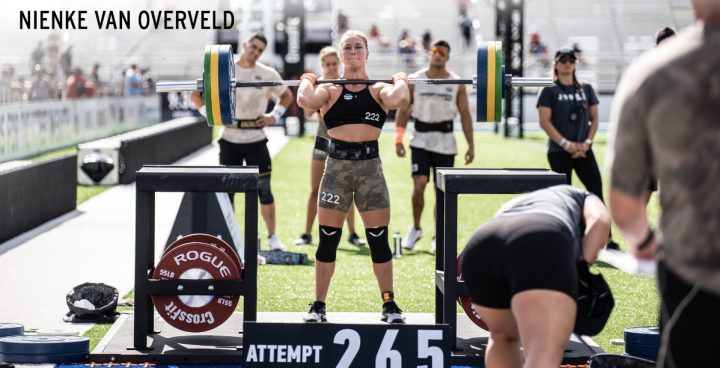
3x CrossFit Games Team Athlete: Nienke van Overveld
- Don't compare yourself to others, but make a plan based on what YOU can do. You know the best on what your body is capable of.
- Perform the CF Open at a time that suits you best and with people that support you.
- Don't stress! You have done many workouts in the past years, these three workouts don't define you as a person. Be proud of signing up.
- Enjoy the CF Open atmosphere. It's only once a year you get to enjoy doing a workout together with the community around the world. Embrace the nerves and celebrate being together.
- Give all you have for these 3 weeks, and whatever outcome that is, you should be proud of your effort regardless of a ranking on the leaderboard.
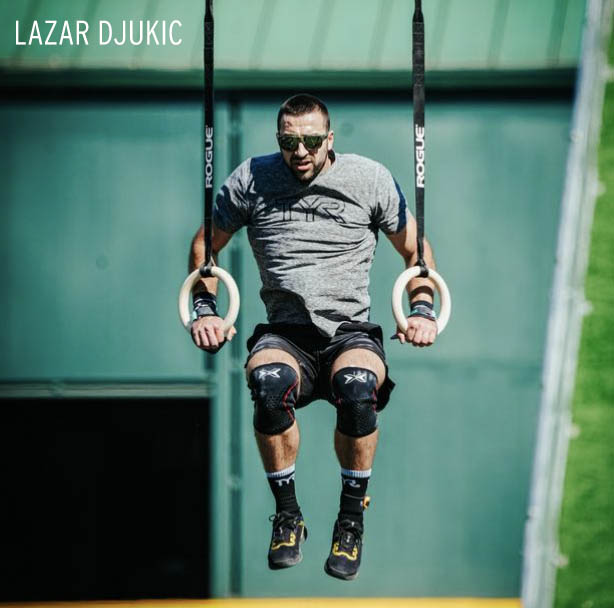
2x top 10 finisher at The CrossFit Games: Lazar Djukic
- Make Sure to warm up properly! Good warm up is the predisposition for a good workout! Start by sweating a little, then go for a specific mobility routine and finish with a specific workout warm up and practicing the movements and transitions if needed.
- Make a strategy. Before the workout starts, think about a realistic goal and plan your workout accordingly. For example if the workout is an AMRAP, think about how long one round would take and try to finish every round in that time.
- Do it early and go for it in the first attempt! We have 4 days to complete the Open workout, I like to complete it Friday morning and not think about it until the next workout. Usually I am tempted to repeat it since you can always do better if you know your score haha, but that’s why I make sure to give my best in the attempt number one, not think about it anymore and get ready to crush the next one!
- Compete only with yourself and do not think about the leaderboard! Think this one is pretty clear! We can get sucked in comparing ourselves with others, but the main point of the Open is to see how much you improved from your past performance!
- Drink some FITAID and have fun!
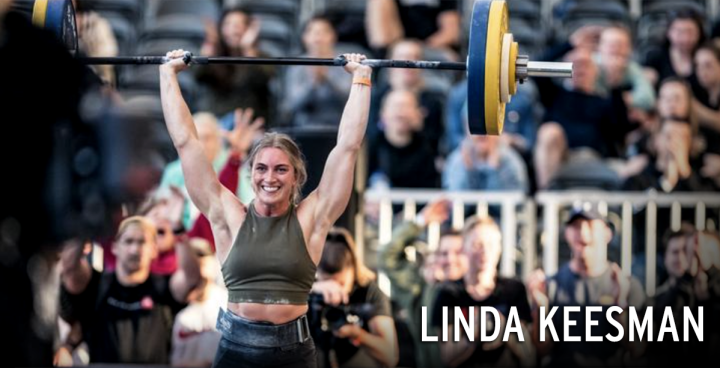
CrossFit Athlete: Linda Keesman
- I would suggest taking it easy on the day(s) before the Open workout. You wanna be fresh for the workout and make sure you have enough energy to smash it. You’re not getting fitter in the last days, now is the time to prioritize recovery.
- Triple check your equipment a few days before doing the workout; grips, chalk, tape, jumping rope, etc. If you’re a control freak like me, ask a friend if you can have his/her equipment nearby as a plan B.
- Watch the Open announcement for specific tips and tricks and maybe check out some YouTube videos, and then discuss your own strategy with the help of a friend or a coach.
- Give all you got! Don’t think about redoing it. Don’t hold yourself back, you might surprise yourself.
- It’s easy to get caught up in comparing yourself with others and refresh the leaderboard all weekend long. Remember that you’re doing it for yourself. No matter if you improve your ranking from last year or achieve the goals you’ve set for yourself; you should be proud of yourself for showing up and committing to giving your all three weeks in a row.

2022 Rookie of the Year: Emma Lawson
- Eat a good meal about an hour before you go to the gym (high carbs and some protein) so you can feel ready to attack the workout with enough energy.
- Get a good warmup in! Get the heart rate up prior to the workout, good mobility, and other workout specific warm ups.
- Find a strategy and stick to it! Don’t go out too hot….you might regret it early on!!
- Recover! After the workout spend time mobilizing and foam rolling so you are ready to go for the next week!

Sydney Wells:
- Don’t get too caught up in the leaderboard
- Focus on your own performance and compete against yourself -> make sure you’re getting better and better each year!
- Take advantage of this time to test yourself, it only comes around once year!
- Push yourself!
And certainly - pack your gym bag or pick up a FITAID at your gym! FITAID drinks are a great choice for active recovery days and post-workout routines. They contain no artificial sweeteners, with no sucralose or aspartame or Ace-K, and have clean caffeine from green tea extract.

Overall, the message is clear - give it your all, have fun, and be proud of your effort regardless of the outcome.
With these tips from experienced athletes, you'll be well on your way to success in the Open 2023.
The Open 2023 is approaching and it’s time for athletes to get ready for the big event! In this post, top Team FITAID Athletes share their tips for success in the Open. Athletes such as Kelsey Kiel, Nienke van Overveld, Lazar Djukic, Linda Keesman, Emma Lawson, and Sydney Wells all share their advice on how […]
Originally Posted on https://healthyrecipesblogs.com/paleo-banana-bread/
What's for dinner? How about this...
Keto Banana Bread Recipe?
Ok, well it is not exactly a "meal" - unless you eat the entire loaf. And don't worry, we won't judge you if you do!
- Cooking spray for the pan (such as avocado oil spray)
- 3 large eggs
- 3 large very ripe bananas well mashed (1.5 cups)
- 1 tablespoon vanilla extract
- 2 tablespoons honey
- 2 cups blanched finely ground almond flour (8 oz)
- 1 tablespoon ground cinnamon
- ¼ teaspoon kosher salt
- 1 teaspoon baking soda
-
Preheat your oven to 350°F. Line a small loaf pan (8.5 X 4.5 inches) with parchment paper strips, leaving an overhang on each side of the pan. Lightly spray the lined pan with oil.
-
In a medium bowl, whisk together the eggs, mashed bananas, vanilla, and sweetener.
-
Gradually whisk in the almond flour, cinnamon, kosher salt, and finally the baking soda. Whisk until smooth.
-
Using a rubber spatula, transfer the batter to the prepared pan. Gently tap the pan on the countertop to evenly distribute the batter.
-
Bake the banana bread until browned and set, and a toothpick inserted in its center comes out dry, 40-50 minutes.
-
Using the excess parchment paper as handles, carefully remove the banana bread from the pan and transfer it to a wire rack. Carefully remove the parchment, to allow air to circulate.
-
Cool the bread completely on the cooling rack for about 2 hours. Slice it into 12 slices and serve.
LEFTOVERS
Once the bread is completely cool, slice it. Then place the slices in an airtight container, separating layers with wax paper. You can keep them this way in the fridge for up to 4 days.
You can also freeze the slices in freezer bags. Again, if layering, separate the layers with wax paper.
And don't forget your ice-cold FITAID to wash it down!
Ready for your new go-to Keto Banana Bread Recipe? Ok, well it is not exactly a “meal” – unless you eat the entire loaf. And don’t worry, we won’t judge you if you do! Cooking spray for the pan (such as avocado oil spray) 3 large eggs 3 large very ripe bananas well mashed (1.5 cups) 1 tablespoon vanilla extract 2 tablespoons honey
Originally posted by: https://www.joyfulhealthyeats.com/easy-one-pot-quinoa-stuffed-pepper-recipe/
What's for dinner? How about...
Quinoa Stuffed Peppers
Ingredients
- 1 tablespoon avocado oil
- 1 cup diced yellow onion
- 3 garlic cloves, minced
- 1 lb. lean ground beef
- 1 red pepper, diced
- 1 green pepper, diced
- 1 tablespoon tomato paste
- 14 oz. diced fire roasted tomatoes
- 1 cup dry quinoa
- 1 cup beef broth
- 1 cup water
- 1 1/2 teaspoons dry basil
- 1 teaspoon dry oregano
- 1/2 teaspoon fennel seeds
- 1/4 teaspoon salt
- 1/8 teaspoon pepper
- 1 cup shredded Monterey Jack cheese
Instructions
- High a large skillet to medium high heat.
- Add avocado oil to the pan along with onions. Saute until translucent, about 2-3 minutes then add garlic and saute for 30 seconds.
- Next, add ground beef to the pan, breaking up with wooden spoon. Cook until no longer pink, approximately 3-4 minutes.
- Then add in green pepper, red pepper, tomato paste, quinoa, fire roasted tomato, beef broth, water, dry basil, dry oregano, fennel seeds, salt and pepper. Stir everything together.
- Cover and bring to boil. Reduce heat to simmer for 15 minutes.
- Once quinoa is cooked through top with 1 cup of shredded cheese and cover. Cook an additional 2 minutes until cheese is melted. Garnish with chopped fresh parsley.
- Serve.
- Pair with an ICE-COLD Fitaid & voila!
See that was easy!

What’s for dinner? How about… Quinoa Stuffed Peppers – full of good protien, carbs and veggies, this can’t go wrong meal is a fast prep and easy to please the entire family! Just pair with an ice-cold FITAID and you are golden for tonight’s dinner plans!
Originally posted at https://insanelygoodrecipes.com/air-fryer-salmon-patties/
What's for dinner? How about...
Salmon Patties!
These air fryer salmon patties are a healthy alternative to regular beef burgers!
Some call them salmon patties, to others, they’re croquettes. No matter what you call them, give this recipe a shot and let us know how it goes.
Air Fryer Salmon Patties
Salmon patties are golden and crispy on the outside, soft and flaky on the inside, and delicious in every bite.
They’re nutritious, to boot! Salmon is rich in Omega-3 fatty acids and antioxidants. Read more about why FITAID has Omega-3s HERE Frying it in oil adds so many calories, though. The solution? Use the air fryer. You’ll still get that crunchy outer crust, but without all that oil. It’s a win-win!
INGREDIENTS
- Aioli Dipping Sauce
- 1/2 cup mayonnaise
- 1 teaspoon garlic, finely minced
- 1/2 teaspoon fresh lemon juice
- 2 pinches of Cajun seasoning
- Salmon Patties
- 12 ounces salmon, minced
- 1 tablespoon fresh chives, chopped
- 1 teaspoon dried parsley
- 1 teaspoon garlic, finely minced
- 1/2 teaspoon salt
- 1 tablespoon all-purpose flour, more if needed
- 1 lemon
- Cooking spray

Right to the recipe:
- This recipe calls for fresh minced salmon, but you can also use canned or previously cooked salmon instead.
- Use two forks to break the salmon into flakes.
- Mix in a tablespoon of flour to bind the ingredients. Add more if needed.
- Divide the mixture into four and shape them into patties.
- Preheat your air fryer to 350 degrees Fahrenheit. Slice the lemon into four wedges, and place them at the bottom of the air fryer basket.
- Place the patties on top of the lemon wedges. Aside from the flavor, this will prevent them from sticking to the bottom of the basket.
- Spray the tops with oil – this gives the patties extra crunch. Stick to olive, avocado, or canola oil spray because they have a high smoke point.
- Pro-tip: do not use an aerosol oil spray, as it contains harmful chemicals that will damage your air fryer over time.
- Attach the basket into the air fryer and reduce the heat to 275 degrees Fahrenheit.
- Cook the patties for 10 to 15 minutes. Flip them over halfway through to ensure even cooking.
- Spray the tops with oil. This will ensure that both sides are nice and crispy.
- To test for doneness, insert a meat thermometer into the center of a patty.
- It should read at least 145 degrees Fahrenheit. They should be golden brown and crisp at this point.
Originally posted at https://insanelygoodrecipes.com/air-fryer-salmon-patties/ What’s for dinner? How about… Salmon Patties! These air fryer salmon patties are a healthy alternative to regular beef burgers! Some call them salmon patties, to others, they’re croquettes. No matter what you call them, give this recipe a shot and let us know how it goes. Air Fryer Salmon Patties Salmon patties […]
Is it getting hot in here?
Stretching before exercise | The Science of Warming Up
What is the science behind warming up before you exercise?
Warming up before exercise is important as it prepares your body for physical activity and can help reduce the risk of injury. The science behind warming up is rooted in physiology and biomechanics.
When you warm up, your body experiences a series of physiological changes that help prepare it for exercise. These changes include increased blood flow to the muscles, increased heart rate, and increased body temperature. These changes help to increase the delivery of oxygen and nutrients to the muscles, which can help to improve muscle function and performance.
STAY STRETCHY
Warming up also helps to increase muscle elasticity, which can reduce the risk of injury. This is because warm muscles are more pliable and less likely to tear or strain during exercise. Warming up also helps to reduce muscle stiffness, which can improve flexibility and range of motion.
GOOD FOR YOUR BRAIN
Additionally, warming up can help to improve mental readiness and focus. This is because the act of warming up can help to increase the release of endorphins, which can improve mood and reduce feelings of anxiety and stress.

Warming up before exercise is important as it prepares your body for physical activity and can help reduce the risk of injury. A proper warm-up should last 5 to 10 minutes and should include both dynamic and static stretching exercises.
Here is a comprehensive list of the best ways to warm up for exercise:
Dynamic Stretching:
High knees
Butt kicks
Skipping
Leg swings
Arm circles
Aerobic Exercise:
Jumping jacks
Jogging
Jump rope
Burpees
Sport-Specific Movements:
If you are going to play basketball, shooting some hoops and dribbling can be a great warm-up.
If you are going to play soccer, practicing passing and dribbling can be a good warm-up.
Static Stretching:
Hamstring stretch
Quad stretch
Calf stretch
Groin stretch
It is important to warm up properly before exercise as it helps to increase blood flow to the muscles, increase heart rate, and increase body temperature. This can help to reduce muscle stiffness and improve overall performance during exercise.
It is also important to listen to your body and modify your warm-up routine as needed. If you have any specific physical limitations or injuries, be sure to consult with a healthcare professional to determine the best warm-up routine for you.
Here are some scientific references that support the benefits of warming up before exercise:
- Lees, A., & Hopkins, W. G. (2010). The importance of warm-up for athletic performance. Sports Medicine, 40(12), 953-964.
- Gleim, G. W., & McHugh, M. P. (1997). Flexibility and its influence on sports injury and performance. Sports Medicine, 24(5), 289-299.
- Green, J. S., & Pargman, D. (2001). The influence of stretching on performance. Journal of Strength and Conditioning Research, 15(4), 402-409.
- Jakobsen, M. D., Olesen, J. L., & Saltin, B. (2009). Warm-up, physical performance and muscle metabolic responses. Journal of Applied Physiology, 106(3), 876-884.
These references provide evidence for the benefits of warming up before exercise, including improved performance, reduced risk of injury, and increased flexibility and range of motion. By incorporating a proper warm-up routine into your exercise routine, you can help to improve your overall performance and reduce the risk of injury.
FITAID Drinks and Muscle Recovery
FITAID drinks are a great choice for active recovery days and post-workout routines. They contain no artificial sweeteners, with no sucralose or aspartame or Ace-K, and have clean caffeine from green tea extract.
Warming up before exercise is important as it prepares your body for physical activity and can help reduce the risk of injury. The science behind warming up is rooted in physiology and biomechanics.
Meditation and Post-Workout Recovery:
The Science and Benefits of meditation for sports & post-workout recovery

Meditation has been practiced for thousands of years, originating in ancient India and then spreading to China, Japan, and other countries. In recent years, it has gained popularity as a tool for managing stress, improving mental health, and optimizing physical performance. In this article, we'll explore the science behind meditation and how it can be used in post-workout recovery. We'll answer common questions like: What is the science behind meditation? Where did meditation originate? Does meditation really work? What is guided meditation? Is meditation the same thing as praying? And finally, we'll recommend some meditation apps and highlight famous athletes who use meditation.
What is the science behind meditation?
Meditation has been shown to have a number of positive effects on the body and brain. For example, studies have found that mindfulness meditation, a type of meditation that involves focusing on the present moment, can help reduce anxiety, depression, and stress. Additionally, meditation has been shown to improve attention, memory, and cognitive flexibility. It can also increase gray matter volume in the brain, which is associated with better mental health and cognitive functioning.
Meditation can also have a profound impact on physical health. Research has shown that it can lower blood pressure, reduce inflammation, and improve immune function. These benefits are believed to result from the changes that meditation brings to the autonomic nervous system, which controls unconscious processes like heart rate and digestion.
Where did meditation originate?
Meditation originated in ancient India over 2,500 years ago as part of the Hindu and Buddhist religious traditions. In these cultures, meditation was used as a way to connect with the divine and gain inner peace. Over time, meditation has evolved into a secular practice that is used by people of all backgrounds and beliefs to improve their physical and mental well-being.
Does meditation really work?
Yes, meditation really works. There is a growing body of scientific evidence that supports the benefits of meditation for physical and mental health. Many studies have found that meditation can improve mood, reduce stress, and increase cognitive function. Additionally, meditation has been shown to have a positive impact on physical health, including lowering blood pressure, and boosting the immune system.
What is guided meditation?
Guided meditation is a type of meditation in which a trained teacher leads you through the process. Guided meditations can take many forms, including visualizations, body scans, and mindfulness exercises. They are often used to help people who are new to meditation get started and to provide a structured experience.
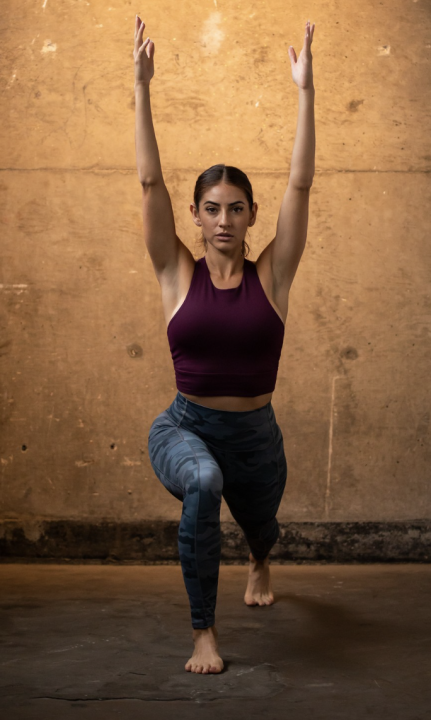
Is meditation the same thing as praying?
No, meditation and praying are not the same thing. While both meditation and prayer can be used to quiet the mind and connect with a higher power, they are distinct practices. Prayer is typically an act of worship or petition, whereas meditation is a mental exercise that focuses on the present moment.
What is a mantra and how is it used in meditation?
A mantra is a word or phrase that is repeated in meditation to help focus the mind. Mantras can be in any language, but are often in Sanskrit or other ancient languages. The repetition of a mantra helps to quiet the mind, reduce distractions, and bring the meditator into a state of deeper concentration and awareness.
In meditation, the mantra is repeated either out loud or silently to oneself. The act of repeating the mantra helps to focus the mind and bring the meditator into a state of relaxation and calmness. The use of a mantra can also help to bring about a sense of mental clarity and inner peace.
There are many different types of mantras that can be used in meditation, each with a different purpose or effect. Some mantras are designed to promote feelings of love and compassion, while others are used to help release negative thoughts and emotions. Some mantras are simply used as a tool to help focus the mind and bring the meditator into a state of deep concentration.
It is important to find a mantra that resonates with you personally and to use it consistently in your meditation practice. Over time, the repetition of the mantra can help to quiet the mind and bring the meditator into a state of deeper awareness and insight.
Meditation Apps
There are many meditation apps available for download that can help you start or continue a meditation practice. Some popular options include:
- Headspace
- Calm
- Insight Timer
- Stop, Breathe & Think

Famous Athletes who use Meditation
Here is a list of some athletes who have spoken publicly about their use of meditation and its benefits for their athletic performance:
- LeBron James, NBA player
- Kobe Bryant, retired NBA player
- Russell Wilson, NFL quarterback
- Novak Djokovic, tennis player
- Kevin Love, NBA player
- Michael Phelps, Olympic swimmer
- Abby Wambach, retired professional soccer player
- Andy Puddicombe, former professional rugby player and mindfulness teacher
- Ryan Giggs, retired professional soccer player
- Victor Cruz, retired NFL player
These athletes have spoken about the ways in which meditation has helped them improve their focus, concentration, and mental clarity, both on and off the field. By using meditation to calm their minds and reduce stress and anxiety, these athletes are better able to perform at their best during competitions and training.
FITAID Drinks and Muscle Recovery
FITAID drinks are a great choice for active recovery days and post-workout routines. They contain no artificial sweeteners, with no sucralose or aspartame or Ace-K, and have clean caffeine from green tea extract.
Here are some scientific references to support the claims made in the article:
- The benefits of mindfulness meditation on mental health:
- A review of the literature found that mindfulness meditation can reduce symptoms of anxiety and depression (Goyal, Singh, Sibinga, Gould, Rowland-Seymour, Sharma, Berger, Sleicher, Maron, Shihpaisen, et al. 2014)
- A meta-analysis of 47 studies found that mindfulness meditation can significantly reduce anxiety and depression symptoms (Hu and Gotink, 2015)
- A systematic review of mindfulness-based interventions for stress reduction found that these interventions can significantly reduce symptoms of stress and anxiety (Smith, Richardson, Hoffman, Pilkington, and Sellman, 2014)
- The benefits of mindfulness Meditation for Post-workout recovery & physical health:
- A systematic review of studies on mindfulness meditation and cardiovascular risk found that mindfulness meditation can reduce blood pressure and improve heart rate variability (Ma and Teasdale, 2004)
- A randomized controlled trial found that mindfulness meditation can reduce inflammation and improve immune function (Black, Ostafin, Biegel, Karg, Fraser, and Seng, 2017)
- The benefits of mindfulness meditation on cognitive function:
- A systematic review of studies on mindfulness meditation and cognitive function found that mindfulness meditation can improve attention, working memory, and executive function (van den Berg, Beckerman, Bohlmeijer, and Meijsteren, 2015)
- A meta-analysis of studies on mindfulness meditation and brain structure found that mindfulness meditation can increase gray matter volume in the brain (Hölzel, Carmody, Evans, Farris, Roemer, and Goldberg, 2011)
- The benefits of meditation on athletic performance and Meditation for Post-workout recovery:
- A review of the literature found that meditation can improve athletic performance by reducing stress and anxiety, increasing focus and attention, and enhancing physical recovery (Holt and Beal, 2011)
These are just a few examples of the many studies that support the benefits of mindfulness meditation for physical and mental health. Please note that this is not a comprehensive list and more research is needed to fully understand the effects of meditation on the body and mind.
Guided meditation is a type of meditation in which a trained teacher leads you through the process. Guided meditations can take many forms, including visualizations, body scans, and mindfulness exercises. They are often used to help people who are new to meditation get started and to provide a structured experience
Originally posted on https://kathrynskitchenblog.com/the-best-cauliflower-mac-and-cheese/
What's for dinner tonight? How about...
The absolute best Cauliflower Mac & Cheese - EVER
This low carb side dish is on repeat at our house- we just can’t get enough. I love how cauliflower is a versatile vegetable and can be used in numerous recipes. Cauliflower recipes have been trending for years since they’re low carb, nutritious, and basically serve as a blank slate for flavor.
What you need:
- Cauliflower – One large head of cauliflower or two small heads. Fresh cauliflower is much better than frozen cauliflower rice for this keto cauliflower mac.
- Olive oil – You could really use any neutral oil that you have on hand.
- Salt + black pepper – One of the best parts of this recipe is the simplicity! It only requires minimal kitchen staple seasonings.
- Garlic powder – Or not. If you’re a huge fan of garlic, you could certainly replace this with fresh minced garlic for a stronger flavor.
- Onion powder – Onion powder can also be increased or decreased based on personal preference.
- Heavy whipping cream – Helps add to the creaminess of your low carb cauliflower mac. You could also use milk if you prefer, it may change the consitency a bit. Sometimes I’ll use both and divide them in the recipe.
- Cream cheese – If you’re trying to keep this cheesy cauliflower recipe on the healthier side, I would use a low fat cream cheese.
- Cheese – Try a combination of Cheddar, Monterey Jack and Gruyere cheese, but feel free to choose whichever cheeses you prefer. It is also a great way to clean out the odds and ends in the fridge.
CAULIFLOWER
Cutting the cauliflower into smaller uniform pieces will ensure they all cook at the same rate. I also love a few crispy pieces so I cut some into even smaller pieces. You can cut your cauliflower into bigger pieces if you prefer but you will have to roast them for a little longer or settle for a snap in the middle.
Simply place the cauliflower pieces in an even layer on a baking dish lined with parchment paper or foil. Drizzle with olive oil, salt and pepper and roast cauliflower for 15-20 minutes.
Optional:If you are a lover of that char, like me, you can opt to switch it over to broil for a quick blitz of heat. Make sure to keep a watchful eye to prevent burning- especially if you used parchment paper.
CHEESE SAUCE
After you’ve achieved tender cauliflower, it’s time to make the gooey sauce. This is my favorite part! Use your favorite cheese combinations as long as it equals 2 1/2 cups total. This cheese sauce is straightforward to make.
-
- Whisk together the cream and cream cheese (make sure to cut into pieces so it melts faster) in a saucepan until combined.
- Add in the rest of the ingredients and vigorously whisk until combined and cheese is smooth. Once the sauce is melted, remove from the heat immediately. It is important to keep an eye because you don’t want to over cook it otherwise it will turn into a solid. All stovetops vary so this cheese sauce may cook a little quicker or slower depending on your stove.
- The last step is to combine it all together! Combine the cream sauce with the cauliflower pieces until they are well coated.
STORAGE & LEFTOVERS
Store leftovers in an airtight container for up to 5 days.
To reheat, simply reheat in the microwave or even warm it up in the oven. If it seems a little dry, you could always add a splash of milk. You can also do this in a small saucepan over low heat on the stovetop.

Originally posted on https://kathrynskitchenblog.com/the-best-cauliflower-mac-and-cheese/ What’s for dinner tonight? How about… The absolute best Cauliflower Mac & Cheese – EVER This low carb side dish is on repeat at our house- we just can’t get enough. I love how cauliflower is a versatile vegetable and can be used in numerous recipes. Cauliflower recipes have been trending […]
















